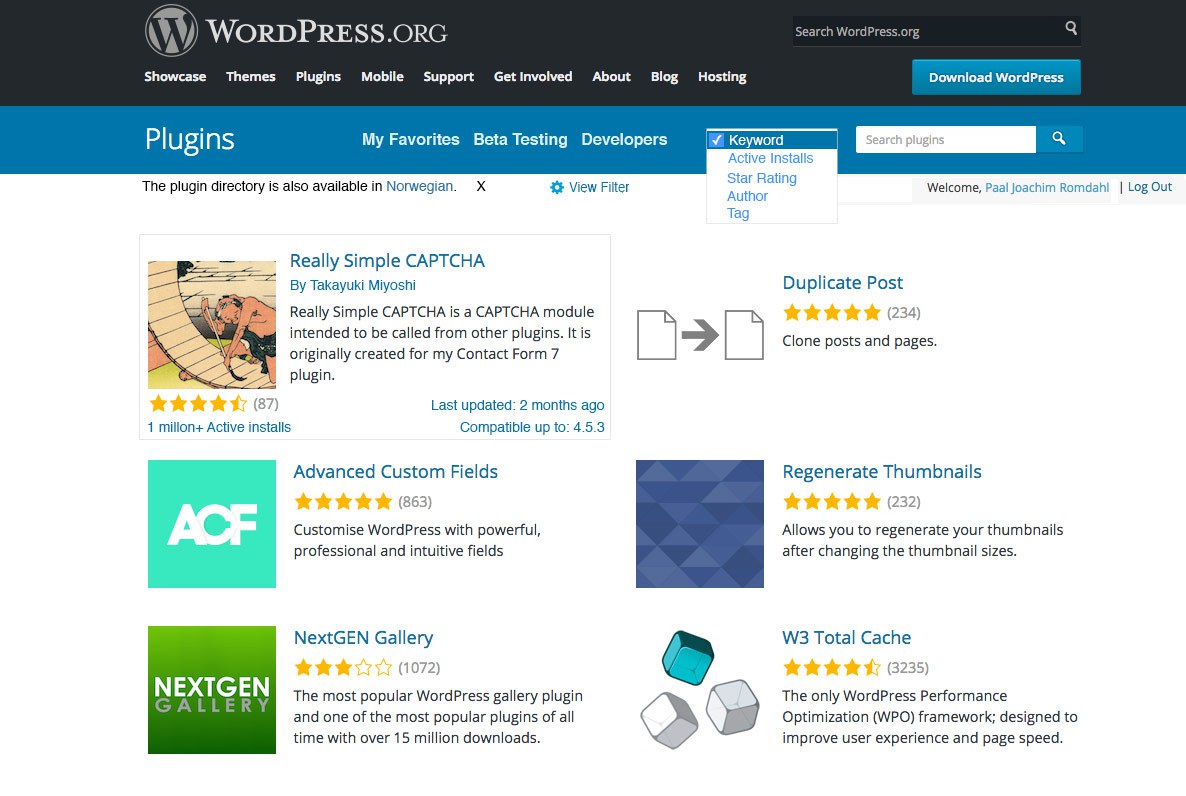When we announced that the new WordPress plugin directory redesign was in open beta, a number of readers provided us with their feedback. Some of the most common items mentioned include:
- Missing tabs
- Too many read more links
- Everything displayed on one page leading to a lot of scrolling
- A lack of search filters
Based on feedback and his own preferences, Paal Joachim Romdahl of EasyWebDesigntutorials, created a new set of wireframes for the WordPress plugin directory redesign.

Romdahl’s wireframe of the WordPress plugin directory main page adds the ability to filter search results based on keyword, active installs, star ratings, author, and tag. It also adds last updated, compatibility, and active install information to the plugin cards. The page is responsive so those with larger monitors will see additional columns of plugins.
Romdahl also published a design mockup for the single plugin view. The plugin author and title is moved above the plugin banner. Permalinks are displayed beneath the plugin’s banner and the full description is shown by default.

In addition to these two pages, Romdahl created a mockup of the Add New plugins page in the WordPress backend that I encourage you to view.
After browsing the new plugin directory redesign, I discovered a couple of things I don’t like. I prefer clicking on tabs to see specific information rather than using my scrollwheel and having to scan the page to find what I’m looking for.
I also don’t like the number of read more links I have to click, especially the plugin’s description. I agree with many of our readers that it should be prominently displayed in full by default.
It’s hard to know from a screenshot whether something is useable or not. Hopefully, the WordPress Meta Team can implement a few of Romdahl’s ideas into the next iteration of the design to allow the public to test their practicality.
What do you think of the changes proposed in Romdahl’s mockups?
I like the initial proposals by the meta team – fresh, concise, and accessible.
It is true that there are quite a few Read More links. To better handle these, I would appreciate seeing an easily accessible X to collapse a section after having expanded it (without having to scroll). Or even the ability to expand a section by clicking on its header – that seemed an intuitive action for me.